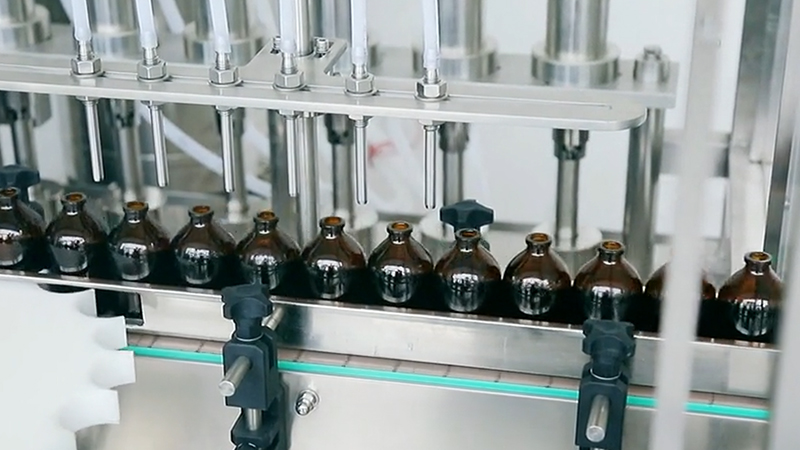Release Date:2024-07-22 15:12:48 Popularity:
With the rapid development of industrial technology, automated production lines have become an important part of modern manufacturing. It integrates advanced mechanical equipment, computer control systems and data analysis tools to achieve a high degree of automation and intelligence in the production process. The widespread application of automated production lines has not only greatly improved production efficiency and product quality, but also demonstrated many advantages in reducing costs, improving safety, and enhancing flexibility. This article will discuss in detail the main advantages of automated production lines and their far-reaching impact on industrial production.

1. Improve production efficiency
Automated production lines have greatly improved production efficiency through continuous and rapid operations. Traditional manual operations are subject to the labor intensity and work efficiency of workers, while automated equipment can achieve 24-hour uninterrupted production, greatly shortening the production cycle.
1. Continuous production: Automated production lines can produce without interruption, avoiding pauses and rest time in manual operations, thereby greatly improving production efficiency.
2. High-speed operation: The high-speed operation capability of automated equipment makes the production speed far exceed that of manual operations. For example, in the production of electronic products, automated equipment can complete the welding and assembly of a large number of components in a short period of time, greatly improving the production speed.
2. Ensure product quality
The automated production line ensures the stability and consistency of product quality through precise control systems and strict testing equipment. Compared with manual operation, the automated production line reduces the impact of human factors on product quality.
1. High-precision operation: Automated equipment is capable of high-precision operation to ensure the accuracy of each production link. For example, in automobile manufacturing, robots can accurately weld car bodies to ensure the consistent quality of each weld.
2. Real-time monitoring: The automated production line is equipped with an advanced monitoring system that can monitor every detail of the production process in real time, detect and correct problems in a timely manner, and ensure the stability of product quality.
3. Reduce production costs
Automated production lines have significant advantages in reducing production costs. Despite the large initial investment, in long-term operation, automated production lines can significantly reduce total costs by improving efficiency, reducing waste and reducing labor costs.
1. Reduce labor costs: Automated production lines reduce dependence on labor, thereby reducing labor costs. At the same time, it reduces the labor intensity of workers and improves the working environment.
2. Reduce material waste: By precisely controlling each link in the production process, automated production lines can minimize material waste and improve resource utilization. For example, in food production, automated equipment can accurately control ingredients and packaging, reducing the waste of raw materials.
IV. Improve safety
Automated production lines reduce safety risks in manual operations, and through the operation of automated equipment, reduce the incidence of industrial accidents.
1. Reduce manual intervention: Automated production lines reduce the links of manual intervention and reduce the chances of operators coming into contact with dangerous machinery and materials, thereby improving production safety.
2. Safety protection measures: Automated equipment is equipped with a variety of safety protection measures, such as emergency stop devices, guardrails and sensors, which can effectively prevent accidents.

V. Enhance production flexibility
Automated production lines are highly flexible and can quickly adjust production rhythm and processes according to changes in market demand to adapt to the production needs of different products.
1. Fast line change: Automated production lines can quickly switch production lines to adapt to the production needs of different products, improving production flexibility and response speed.
2. Flexible manufacturing: Through flexible manufacturing systems, automated production lines can quickly adjust production plans according to changes in orders to meet personalized and customized production needs.
6. Promote technological innovation
Automated production lines provide a platform and basis for the research and development and application of new technologies, and promote the continuous innovation and progress of technology.
1. Technology integration: Automated production lines integrate advanced machinery, electronics, and information technology, and promote the integration and development of multidisciplinary technologies.
2. Data-driven: Through big data and Internet of Things technology, automated production lines can realize the data-based and intelligent management of the production process, and promote the development of the industrial Internet.
7. Promote sustainable development
Automated production lines also have significant advantages in energy conservation, emission reduction and environmental protection, which helps to achieve sustainable development.
1. Energy conservation and consumption reduction: Automated equipment can accurately control the use of energy, improve energy utilization efficiency, and reduce energy consumption.
2. Environmentally friendly production: Automated production lines reduce pollution emissions in the production process, and use environmentally friendly materials and processes, which helps to achieve green production.
8. Implementation cases of automated production lines
1. Electronic manufacturing industry: After an electronic manufacturing company introduced an automated production line, its production efficiency increased by 40%, and the product qualification rate reached more than 99.5%, which greatly improved its market competitiveness.
2. Automobile manufacturing: A certain automobile manufacturing company has achieved full automation of body welding and assembly through automated production lines, shortening the production cycle by 30% and significantly improving product quality.

In summary, as an important cornerstone of modern industry, automated production lines are driving the production of various industries towards intelligence, automation and greening with their many advantages such as high efficiency, high quality, low cost, safety and flexibility. In the future, with the continuous advancement of science and technology and the deepening of its application, automated production lines will continue to lead the trend of the industrial revolution and inject new impetus into the development of global industry.